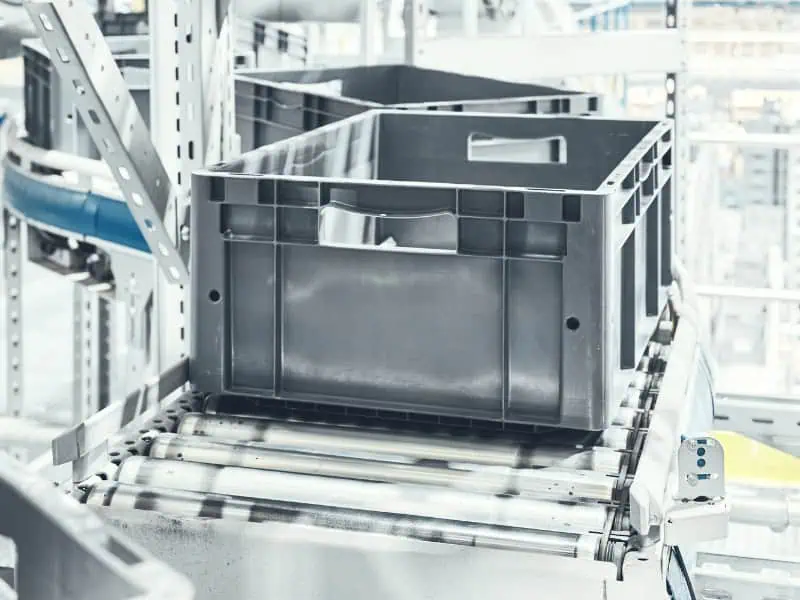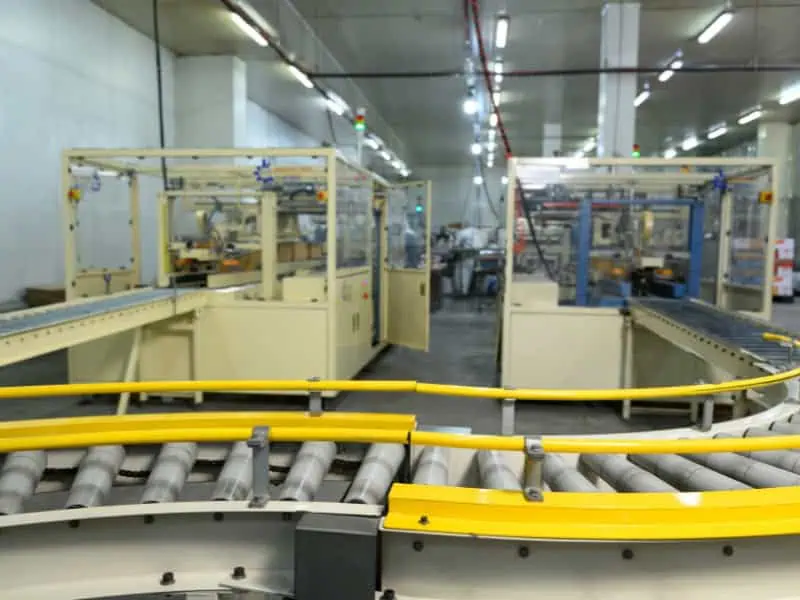A roller conveyor system boosts warehouse efficiency by standardising flow, reducing touches, and keeping workstations supplied without constant intervention. That combination removes delays, smooths queues, and shrinks travel time between process steps. Because cartons glide on defined paths, teams maintain momentum and avoid stop–start handoffs. In turn, operators focus on value tasks instead of hauling loads or clearing ad-hoc jams. With the right lane widths, slopes, and stops, a roller conveyor system scales quickly and adapts to shifting order profiles. Most important, the setup delivers repeatable cycle times that make planning and rostering easier during peak. The result is faster, safer movement through receiving, picking, packing, and dispatch, while maintenance stays straightforward and predictable. This article, explains how to decide where rollers fit, which design choices matter, and when to hire versus buy for maximum impact
What are the main advantages of using a roller conveyor system for warehouse operations?
A roller conveyor streamlines high-frequency movements and cuts out wasted steps. It also stabilises pace across benches, which lifts productivity and morale while reducing risk exposure. Here are the advantages:
- Standardised flow: Predictable travel paths keep throughput predictable and simplify resource planning.
- Lower exertion: Engineered rollers shift force away from operators and reduce repetitive strain over long shifts.
- Modular design: Sections reconfigure quickly as SKU profiles and bay layouts change.
- Simple upkeep: Common roller diameters and centres make field swaps quick.
- Gravity efficiency: Short runs use slope, not power, to move cartons cost-effectively.
For off-the-shelf lanes that match typical carton sizes and duty ratings, explore quality conveyor roller systems engineered to enhance operational efficiency. Place straight sections through pinch points first, then extend to curves and merges as wins compound.
Why is a gravity roller conveyor ideal for short-distance material transfer?
Short hops—picking to quality control, or quality control to packing—benefit most from gravity rollers. You gain controlled movement, tidy lanes, and fast setup without wiring, drives, or controls. Here are the short-run benefits:
- Quick install: Mobile stands and straight sections level up in minutes.
- Controlled pace: Slope, stops, and side guides maintain safe travel through bends.
- Noise reduction: Smooth bearings lower ambient noise near benches.
- Flexibility: Add or remove sections to match seasonal peaks.
- Cost control: Capital stays lean on non-powered stretches.
Set gradients using the heaviest carton so lighter items don’t run away. Add end stops at pack benches, and use inside guides on curves to prevent edge rub. When short transfers flow cleanly, teams handle more lines per hour, and bottlenecks shrink without expanding floor space. In busy periods, that reliability prevents firefighting and keeps orders moving on schedule.
How can a roller conveyor system minimise manual labour and downtime?
Labour drops when rollers, not people, do the pushing. Downtime falls when lanes track straight, slopes suit weight, and maintenance is simple and scheduled. Here are the labour-saving tactics:

- Fit-for-purpose pitch: Roller centres support small cartons without sag or stalls.
- Ergonomic heights: Benches and infeeds help match operators, reducing fatigue and strain.
- One-way flow: Clear arrows reduce cross-traffic and near-misses at busy junctions.
- Smart buffers: Short accumulations prevent starved or blocked stations.
- Spares on hand: Keep standard rollers and bearings to speed swaps.
Tie procedures to national guidance on safe manual handling practices in warehouse operations. Reinforce proper push zones, lift limits, and team handling rules. Over time, consistent ergonomics minimises injury risk and keeps your best operators productive. The upshot is steadier output with fewer interruptions and fewer jam-clearing scrambles during peak hours.
When should a warehouse hire a roller conveyor system rather than purchase one?
Hire when volumes spike, timelines are tight, or processes are unproven. Buying suits for stable, year-round use where utilisation stays high. Here are the hiring triggers:
- Seasonal peaks: Temporary lanes absorb promotions and holiday surges.
- Process pilots: Trial new picking models before committing capital.
- Project work: Short-term contracts justify flexible capacity.
- Fit testing: Validate widths, pitches, and guides on live loads first.
Weigh total period cost, including delivery, setup, and return. If sections will sit idle between seasons, hire to avoid sunk capital and avoid over-spec capital spend. Once the workflow settles and utilisation stabilises, shift to ownership to reduce lifetime cost. Either way, standardising on standard roller specs keeps training and spares straightforward.
Which warehouse applications benefit most from a roller conveyor system installation?
Applications with flat-based cartons, crates, or totes see outsized gains. Repeated movements and predictable paths reward lanes that guide rather than muscle. Here are the best-fit applications:
- E-commerce pack-out: Cartons feed benches with a steady cadence.
- Replenishment staging: Putaway lanes buffer stock close to faces.
- Returns triage: Grading moves quickly without ad hoc handling.
- Kitting cells: Parts travel between build steps with fewer touchpoints.
- Cross-dock sort: Manual diverts route items to the right doors.
For soft packs or odd shapes, use trays or totes to create flat bases. Add guides where cartons skew, and maintain clearance on curves. As flows stabilise, extend lanes to secondary tasks. The result is higher lines per hour without expanding headcount or floor space.
How does roller conveyor system design influence material handling speed?
Design turns physics into performance. Slope, roller diameter, lane width, and pitch determine whether cartons glide safely or stall.
Informative table: Design choices and their impact
| Design factor | What it adjusts | Impact on speed | Practical note |
| Slope/gradient | Gravitational assist | More slope equals faster travel; too high a risk of running away | Set using the heaviest carton |
| Roller diameter | Contact and inertia | Larger diameters roll smoother under load | Match to typical mass |
| Roller pitch (centres) | Base support | Tighter pitch stabilises small items | Balance support and cost |
| Lane width | Clearance and skew | Oversized lanes allow sway; too tight rubs | Leave 25–50 mm clearance |
| Side guides | Tracking through curves | Keeps cartons centred at bends | Inspect after impacts |
| End stops | Safe deceleration | Prevents roll-offs at discharge | Fit before scales/benches |
Here are the design moves:
- Calibrate slopes: Use test sections to find the safe sweet spot.
- Standardise components: Common rollers and brackets speed maintenance.
- Protect corners: Inside guides prevent edge catches on bends.
- Plan buffers: Short accumulations smooth station cadence.
- Visual controls: Flow arrows and load limits support safer carton handling.
Good design reduces wasted walking, stabilises pace, and protects product. Test, measure, and lock in standards per lane type.
Final thoughts
Roller lanes deliver steady gains when installed where movement repeats most. Start small at bottlenecks, prove the slope and pitch with live loads, then scale in measured steps. Maintain ergonomic heights, clear one-way flow, and simple spares to minimise unplanned downtime without complexity. For configuration guidance or quick availability, discover how Conveying & Hoisting Solutions supports efficient material handling while outlining your loads, carton sizes, and space constraints so gear lands ready to work.




